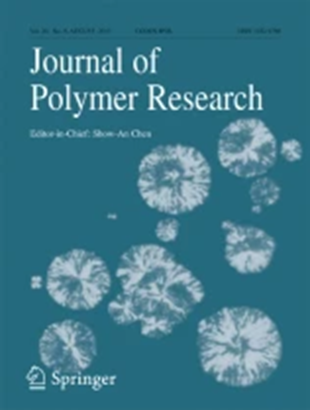Compatibilization effect of nanosilica on polypropylene/polystyrene immiscible blend
Abstract
Inorganic nanoparticles are often utilized to compatibilize immiscible polymer blends. In current work, the effect of the introduction of fumed silica nanoparticles with different surface properties on the viscoelasticity, phase morphology and mechanical properties of polypropylene/polystyrene (PP/PS) blend with 80/20 weight ratio was investigated. Scanning electron microscopy (SEM) characterization revealed that hydrophilic nanosilica was confined in the PS dispersed phase while hydrophobic nanosilica was located mostly in the PS phase and partially at the interface between PP and PS phases. This agreed well with the thermodynamic predictions using the wetting parameter. SEM and optical microscopy observations found that nanosilica only performs the function of morphological compatibilization in the PP/PS immiscible blend, which is reflected in refining and stabilizing the blend morphology. The morphological compatibilization effect is realized by the coalescence suppression of the PS droplets due to the hindered chain motion originating from the selective distribution of nanosilica in PP/PS blend. Dynamic rheological results indicated that nanosilica could not promote significant interfacial tension reduction due to the lack of effective entanglement with polymer components, followed by further deteriorated toughness of nanoparticle filled blend. These results provide a comprehensive understanding of the compatibilization effect of nanosilica on PP/PS immiscible blend.

 求助内容:
求助内容: 应助结果提醒方式:
应助结果提醒方式:


